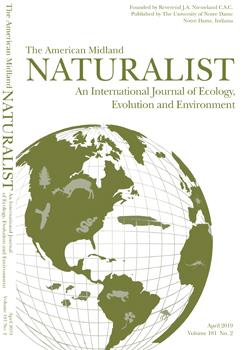Our understanding of mammalian predation on salamanders is primarily restricted to small carnivorous species (i.e., shrews). We conducted a series of investigations to determine whether the Virginia opossum (Didelphis virginiana) is a predator of various salamander species [Desmognathus fuscus, Plethodon dorsalis, and Notophthalmus viridescens (adult and eft)] from the eastern United States. All species, including toxic newt efts, were palatable to opossums. These results suggest opossums could be an active predator of salamanders. In a second study, each terrestrial salamander species exhibited avoidance responses to kairomones from opossums indicating that despite a significant risk of mortality each salamander has evolved mechanisms to minimize predation risk. Combined with overlapping habitat preferences, foraging behavior that places them in contact, and a dietary preference for animal matter, these data suggest opossums may be an important predator on terrestrial salamanders.
How to translate text using browser tools
6 May 2019
Palatability and Predator Avoidance Behavior of Salamanders in Response to the Virginia Opossum (Didelphis Virginiana)
Shelby L. Hart,
Mackenzie M. Spicer,
Theresa Wrynn,
Trevor L. Chapman,
Kari L. Spivey,
Brian G. Gall
ACCESS THE FULL ARTICLE
It is not available for individual sale.
This article is only available to subscribers.
It is not available for individual sale.
It is not available for individual sale.

The American Midland Naturalist
Vol. 181 • No. 2
April 2019
Vol. 181 • No. 2
April 2019




